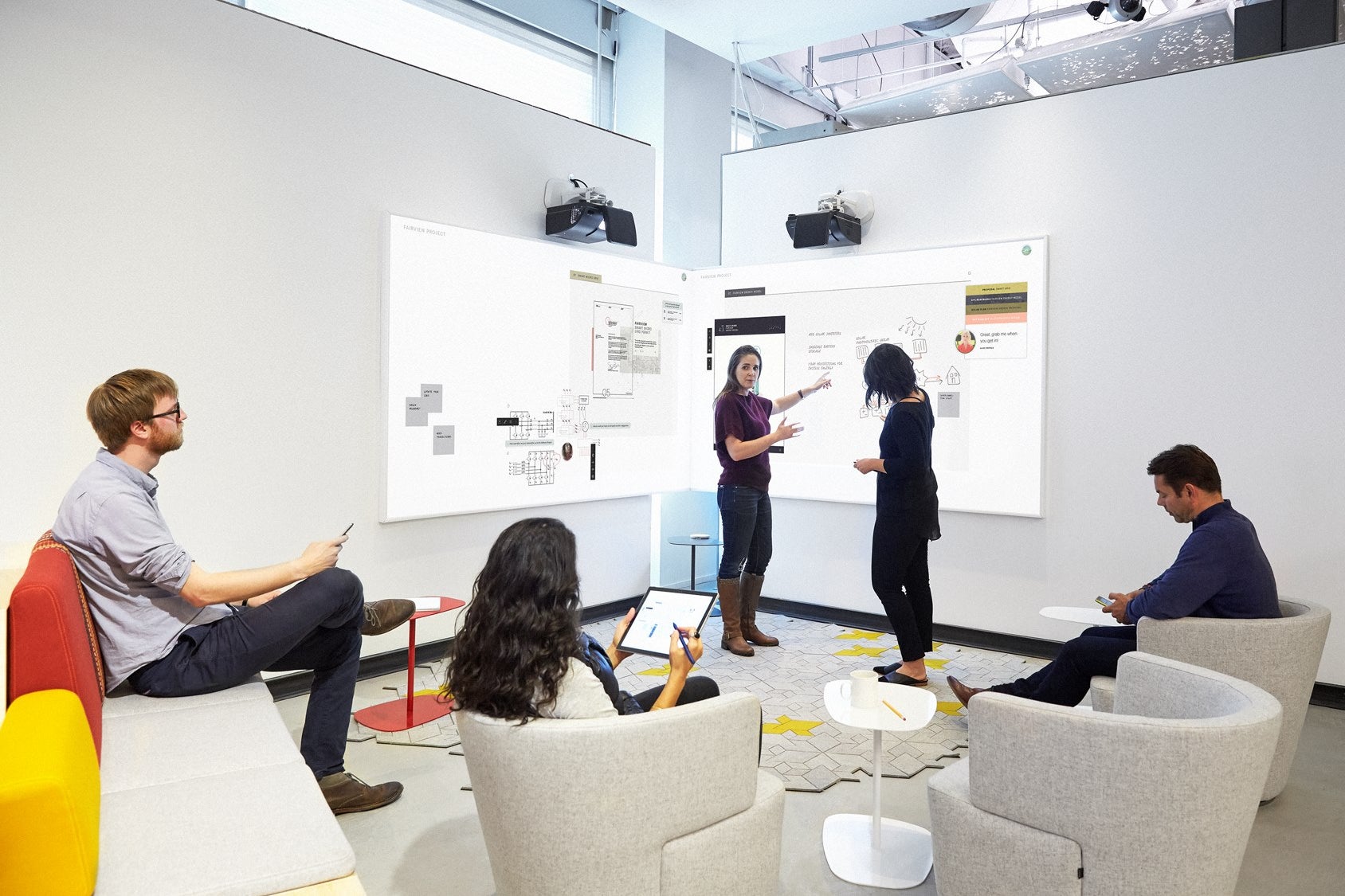Microsoft is designing tools for a world beyond offices
The shift to remote work has not been kind to Microsoft—its productivity software is literally named Office. While the 44-year-old tech giant once had a stranglehold on the at-work productivity business, Google now commands a small but growing share of that market. Indeed, when you think about working on documents collaboratively, the idea of track changes, which was pioneered by Microsoft Word, has taken a backseat to the easier experience of Google Docs.


The shift to remote work has not been kind to Microsoft—its productivity software is literally named Office. While the 44-year-old tech giant once had a stranglehold on the at-work productivity business, Google now commands a small but growing share of that market. Indeed, when you think about working on documents collaboratively, the idea of track changes, which was pioneered by Microsoft Word, has taken a backseat to the easier experience of Google Docs.
Microsoft is hoping to change that. At its Build conference earlier this month, the company announced two tools, Fluid Framework and an update to its HoloLens 2 software, that could better enable remote work and AI-powered businesses.
“We believe that we can bring the next generation of real-time collab to the web,” Microsoft CEO Satya Nadella said as he introduced Fluid Framework. “I think the world is ready for another choice when it comes to web and innovation.”
Fluid Framework, at is core, is technology that transmits data from one computer to other computers nearly instantaneously. Microsoft product manager Mike Morton demonstrated the technology during the Build keynote, typing into one of nine separate windows displaying a single text document. Fluid Framework was so fast that it was tough to tell which of the nine was the original.
Speed isn’t all: The technology also allows content to be linked across multiple documents and document types. For example, you can import a table from Excel into a Word document, make updates to the table in Word, and see those changes automatically reflect back in Excel. Morton also explained that Fluid Framework allows bots to live in documents, adding capabilities like real-time translation depending on a viewer’s preferred language. Ostensibly, this software could be integrated into other programs as well.
The promise of this technology, which Microsoft is also releasing for developers to use and integrate into their own products, is an expansion of workers’ ability to collaborate over the internet from local or remote locations. It reflects a major shift in the way modern offices operate: Collaboration needs to be in real time, make remote workers as productive as those in the office, and make anything needed for work immediately accessible on every device.
Microsoft is also trying to capture the market for supporting workers who don’t necessarily sit at a desk, like machinists or technicians. After announcing the HoloLens 2 for enterprise use earlier this year at Mobile World Congress, the company has now started to roll out applications for the device. That includes Guides, a step-by-step walkthrough in augmented reality that shows a worker how to do a specific task, as well as AR video calls between a HoloLens-wearer and a central office.
At Microsoft’s Envisioning Center in Bellevue, Washington, two employees demonstrated the HoloLens video-calling capabilities for reporters by “fixing” a circuit breaker. The technician called the remote expert at the “site,” who was able to see a first-person view of the scene and add augmented-reality markers to point out where action needed to be taken. The employee in the frontline worker role was also able to see schematics in AR, meaning they didn’t need to take any physical plans with them, and could float the plans in the air right next to the machine they were working on.
That highly choreographed demonstration went off without a hitch, but it’s unclear how the technology would perform in conditions with limited connectivity, poorer lighting, or a circuit breaker that wasn’t meticulously clean.
The Guides feature promises similar expertise, even without another human on the line. Microsoft says customers will be able to train workers using the device, but also have that AR experience available at all times, in the event someone is unsure or wants to refresh their knowledge.
🎧 For more intel on collaboration tools, listen to the Quartz Obsession podcast episode on Google docs. Or subscribe via: Apple Podcasts | Spotify | Google | Stitcher.